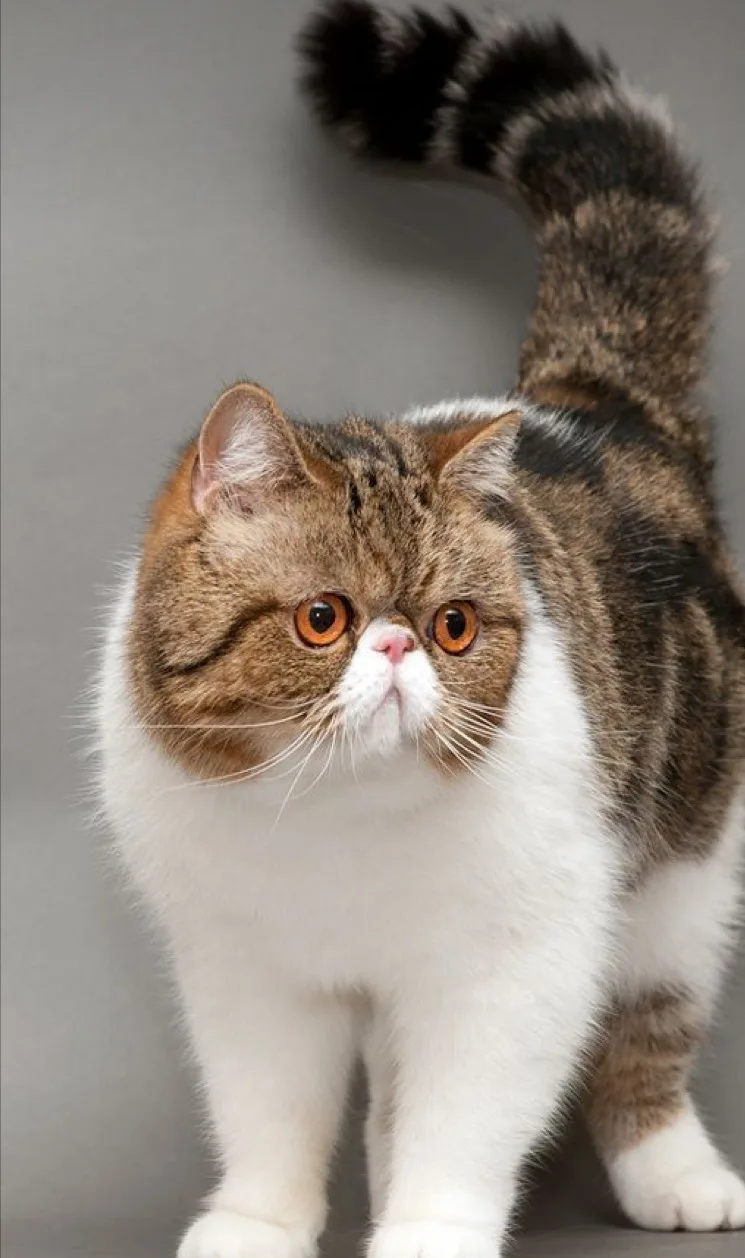Ten cat breeds that are considered among the most popular:
1.Exotic Shorthair
2.Ragdoll
3.British Shorthair
4.Maine Coon
5.Siamese
6.Persian
7.Scottish Fold
8.Bengal
9.Sphynx
10.Abyssinian
1.Exotic Shorthair
The Exotic Shorthair is a popular cat breed known for its adorable appearance and gentle temperament.
Appearance
- Short Coat: As the name suggests, the Exotic Shorthair has a short, plush coat that is dense and soft to the touch.
- Flat Face: One of its most distinctive features is its flat, round face with large, expressive eyes and a short nose. This facial structure resembles that of the Persian cat, as the Exotic Shorthair is essentially a short-haired version of the Persian.
- Stocky Build: The breed has a compact and muscular body with a broad chest and short, sturdy legs.
Personality and Temperament
- Gentle and Affectionate: Exotic Shorthairs are known for their sweet and gentle nature. They typically enjoy being around people and are affectionate towards their owners.
- Relaxed Demeanor: They are generally laid back and calm, making them well suited for indoor living. They are not typically overly active or demanding.
- Playful: Despite their relaxed nature, Exotic Shorthairs do enjoy playtime and interactive toys. They may have bursts of energy but generally prefer lounging and cuddling.
Care and Maintenance
- Grooming: While the Exotic Shorthair has a short coat, it still requires regular grooming to prevent matting and keep it in good condition. Weekly brushing is usually sufficient.
- Health: Like all breeds, Exotic Shorthairs may be prone to certain health conditions, such as respiratory issues due to their flat faces (brachycephalic syndrome) and dental problems. Regular veterinary check-ups are important.
- Indoor Living: Due to their flattened faces, Exotic Shorthairs are best kept indoors to protect them from respiratory issues and potential injuries.
History and Recognition
- Breed Origins: The Exotic Shorthair was developed in the 1960s by crossing Persians with American Shorthair cats, among other breeds. This crossbreeding aimed to retain the Persian’s distinctive appearance while introducing a shorter coat for easier maintenance.
- Popularity: The breed quickly gained popularity for its charming appearance and easygoing temperament. It is recognized by major cat associations worldwide, including The International Cat Association (TICA) and the Cat Fanciers’ Association (CFA).
- Variety: Exotic Shorthairs come in various coat colors and patterns, similar to Persians, including solid, tabby, bi-color, and more.
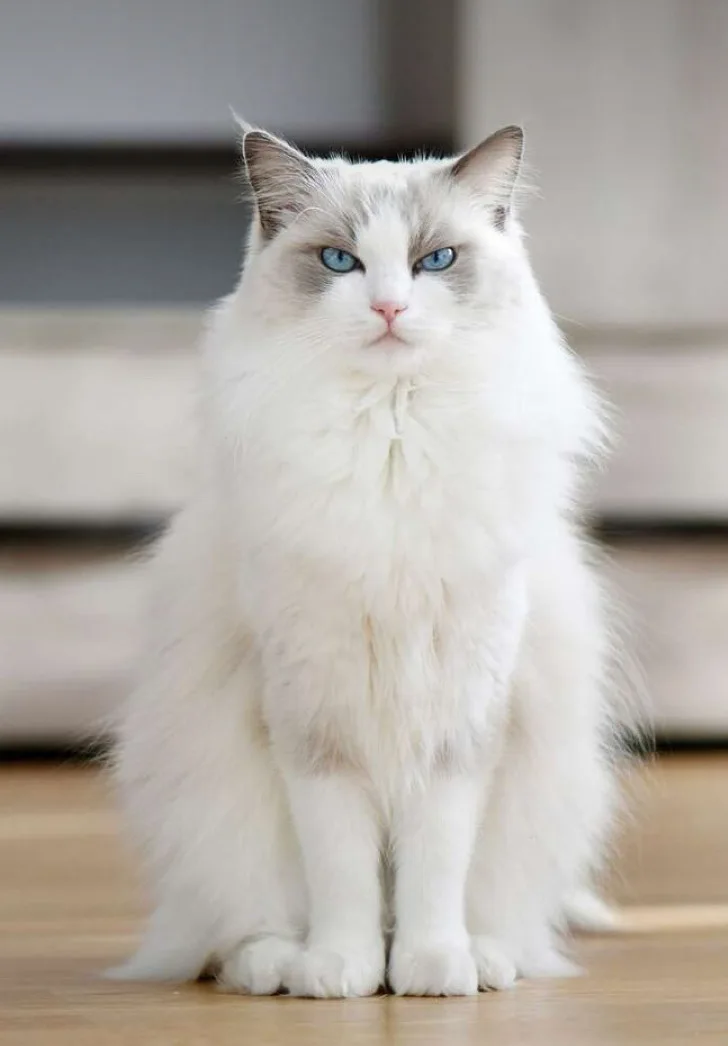
2.Ragdoll
The Ragdoll is a popular and beloved cat breed known for its gentle temperament, striking appearance, and affectionate nature.
Appearance
- Large Size: Ragdolls are a large and muscular cat breed, with males typically weighing between 15-20 pounds (7-9 kg), and females slightly smaller.
- Blue Eyes: One of their most distinctive features is their large, striking blue eyes, which are almond-shaped and expressive.
- Semi-long Coat: Ragdolls have a semi-long, silky coat that is soft and plush to the touch. They have a fluffy ruff around their neck and a bushy tail.
- Color Point Pattern: They are known for their color point pattern, where the points (ears, face, legs, and tail) are darker than the body. Ragdolls come in various color variations, including seal, blue, chocolate, lilac, flame, and more.
Personality and Temperament
- Gentle and Affectionate: Ragdolls are famous for their gentle and laid-back temperament. They are often described as “puppy-like” because they enjoy following their owners around and being involved in family activities.
- Docile: They have a relaxed demeanor and are generally calm in nature, making them well-suited for indoor living. Ragdolls are known to go limp like a ragdoll when picked up, which is how they got their name.
- Social: Ragdolls are sociable cats that enjoy companionship and are usually good with children and other pets. They thrive on human interaction and often form strong bonds with their owners.
Care and Maintenance
- Grooming: Despite their semi-long coat, Ragdolls are relatively low-maintenance in terms of grooming. They benefit from regular brushing to prevent matting and reduce shedding, especially during seasonal changes.
- Health: Ragdolls are generally healthy cats, but like all breeds, they may be prone to certain genetic health issues, such as hypertrophic cardiomyopathy (a heart condition). Regular veterinary check-ups are essential to monitor their health.
- Indoor Living: Due to their gentle nature and tendency to trust strangers, Ragdolls are best kept indoors to protect them from potential dangers and accidents.
History and Recognition
- Breed Origins: The Ragdoll breed was developed in the 1960s by Ann Baker in California, USA. She selectively bred cats with specific traits, including their docile temperament and color point pattern, to create the Ragdoll breed.
- Popularity: Ragdolls quickly gained popularity for their striking appearance and affectionate personality. They are recognized by major cat associations worldwide, including The International Cat Association (TICA) and the Cat Fanciers’ Association (CFA).
- Variety: Ragdolls come in various patterns and colors, including traditional color points (seal, blue, chocolate, lilac), as well as more recently accepted patterns like mitted and bicolor.
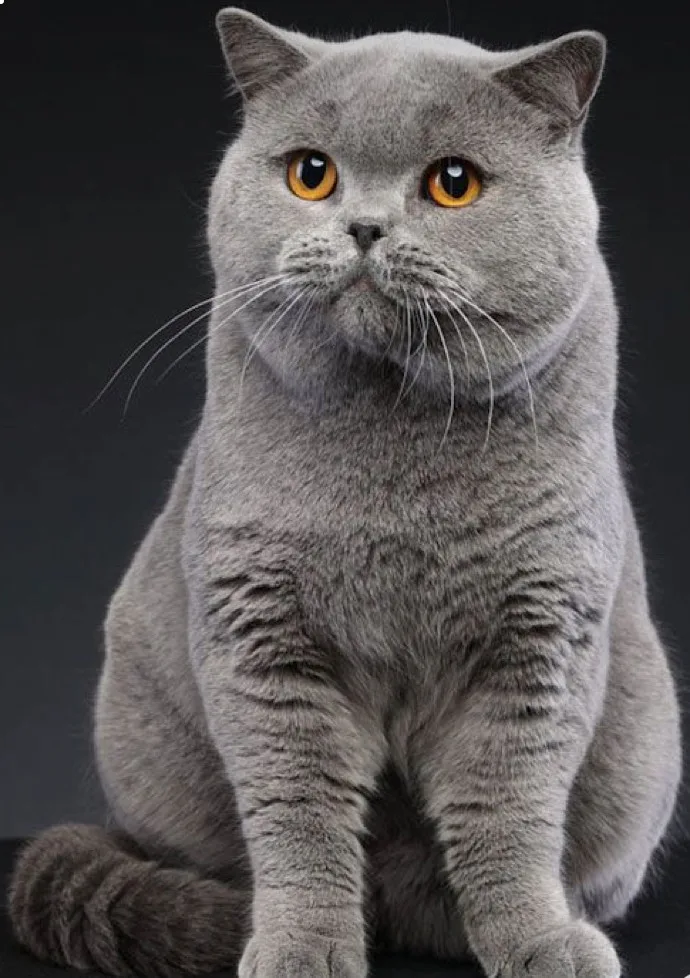
3.British Shorthair
The British Shorthair is a popular and well loved cat breed known for its robust build, round face, and dense coat.
Appearance
- Sturdy Build: British Shorthairs are medium to large-sized cats with a muscular and compact body. They have a broad chest, strong legs, and a rounded appearance overall.
- Round Face: One of their most distinctive features is their round face with chubby cheeks and large, round eyes. Their ears are medium-sized and set far apart.
- Short, Dense Coat: The British Shorthair has a dense and plush coat that lies close to the body. Their coat is easy to care for and comes in a wide variety of colors and patterns, including solid, tabby, bi-color, and calico.
Personality and Temperament
- Gentle and Easygoing: British Shorthairs are known for their calm and laid-back temperament. They are typically gentle and affectionate, enjoying attention from their owners without being overly demanding.
- Adaptable: These cats are adaptable to various living situations and usually get along well with children and other pets. They are content to spend time indoors and do not require extensive exercise.
- Independent: While they enjoy human companionship, British Shorthairs are also independent and can entertain themselves with toys or by observing their surroundings.
Care and Maintenance
- Grooming: The British Shorthair’s short coat requires minimal grooming compared to long-haired breeds. Regular brushing helps to reduce shedding and maintain coat health.
- Health: British Shorthairs are generally healthy cats, but like all breeds, they may be prone to certain genetic health conditions such as hypertrophic cardiomyopathy (a heart condition) and obesity. Regular veterinary check-ups are important to monitor their health.
- Indoor Living: Due to their laid-back nature and dense coat, British Shorthairs are well-suited to indoor living. They should have access to toys and scratching posts to keep them mentally stimulated.
History and Recognition
- Breed Origins: The British Shorthair is one of the oldest cat breeds originating in the UK. They were originally prized for their hunting abilities to protect food stores from rodents.
- Popularity: British Shorthairs gained popularity as domestic pets in the late 19th century. They are recognized by major cat associations worldwide, including The International Cat Association (TICA) and the Cat Fanciers’ Association (CFA).
- Variety: The breed comes in various colors and patterns, with blue (gray) being one of the most well-known colors. Other colors include black, white, cream, red, and silver, among others.
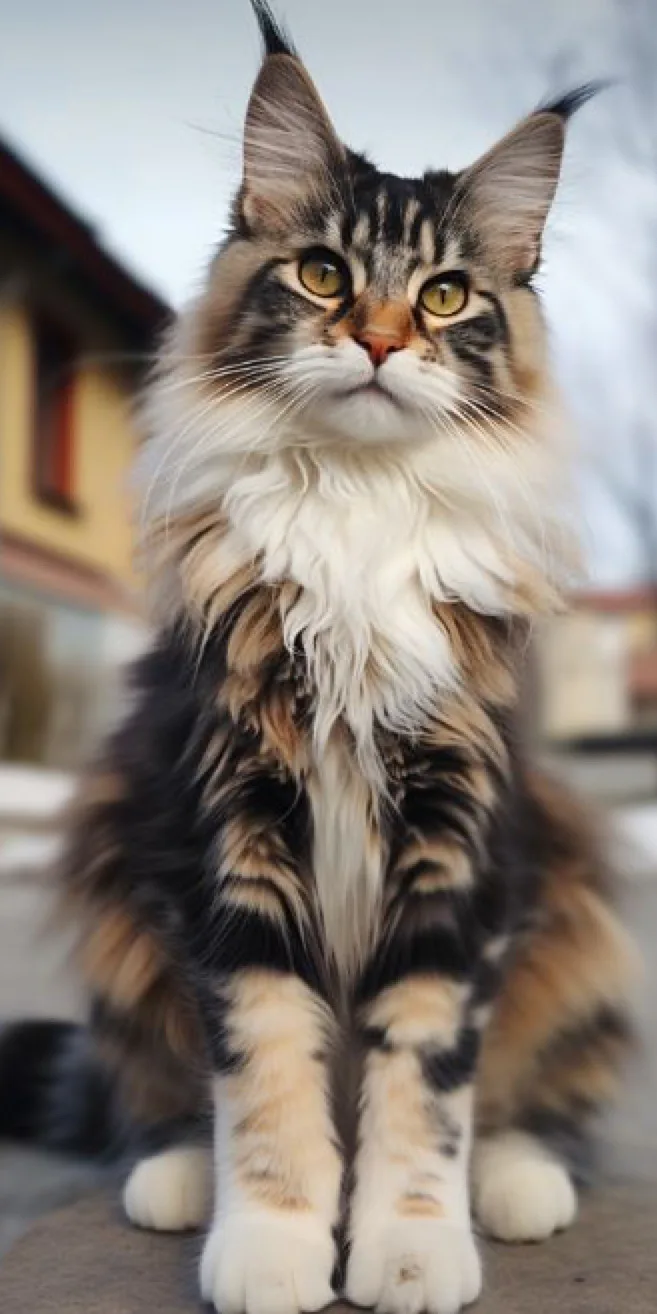
4.Maine Coon
The Maine Coon is one of the most popular and recognizable cat breeds, known for its large size, friendly personality, and distinctive appearance.
Appearance
- Large Size: Maine Coons are one of the largest domestic cat breeds. Adult males typically weigh between 13-18 pounds (5.9-8.2 kg), while females are slightly smaller, averaging 8-12 pounds (3.6-5.4 kg).
- Muscular Build: They have a sturdy and muscular body, with a long and rectangular shape. Despite their size, Maine Coons are agile and graceful.
- Long, Bushy Tail: Their tails are long and bushy, tapering to a point. They are often used for balance and can be wrapped around their bodies for warmth.
- Tufted Ears and Paws: Maine Coons have tufted ears with lynx-like tips and large, tufted paws that help them navigate snowy terrain (since they originated in cold climates).
- Coat: They have a thick, water-repellent coat that is longer on their ruff, stomach, and tail. Their coat comes in various colors and patterns, including tabby, solid, bi-color, and tortoiseshell.
Personality and Temperament
- Friendly and Sociable: Maine Coons are known for their friendly and outgoing nature. They are typically good-natured and get along well with children, other pets, and even strangers.
- Intelligent and Playful: They are intelligent cats that enjoy interactive play and mental stimulation. Maine Coons are known to retain their playful kitten-like behavior well into adulthood.
- Affectionate: While they are not typically lap cats, Maine Coons are affectionate and enjoy being near their owners. They may follow their humans around the house and enjoy being part of family activities.
Care and Maintenance
- Grooming: Due to their long, dense coat, Maine Coons require regular grooming to prevent matting and reduce shedding. Weekly brushing is recommended to keep their coat in good condition.
- Health: Maine Coons are generally healthy cats, but they may be prone to certain genetic health conditions such as hypertrophic cardiomyopathy (a heart condition) and hip dysplasia. Regular veterinary check-ups are important to monitor their health.
- Exercise: Despite their size, Maine Coons are moderately active cats that enjoy climbing, exploring, and playing with toys. Providing them with opportunities for exercise and mental stimulation is important for their well-being.
History and Recognition
- Breed Origins: The exact origins of the Maine Coon are uncertain, but they are believed to have originated in North America, particularly in the state of Maine. They are one of the oldest natural breeds in North America.
- Popularity: Maine Coons have gained popularity worldwide for their striking appearance and friendly temperament. They are recognized by major cat associations, including The International Cat Association (TICA) and the Cat Fanciers’ Association (CFA).
- Myths and Legends: There are various myths and legends surrounding the Maine Coon breed, including the belief that they are descendants of semi-wild cats and raccoons (which is not scientifically accurate).
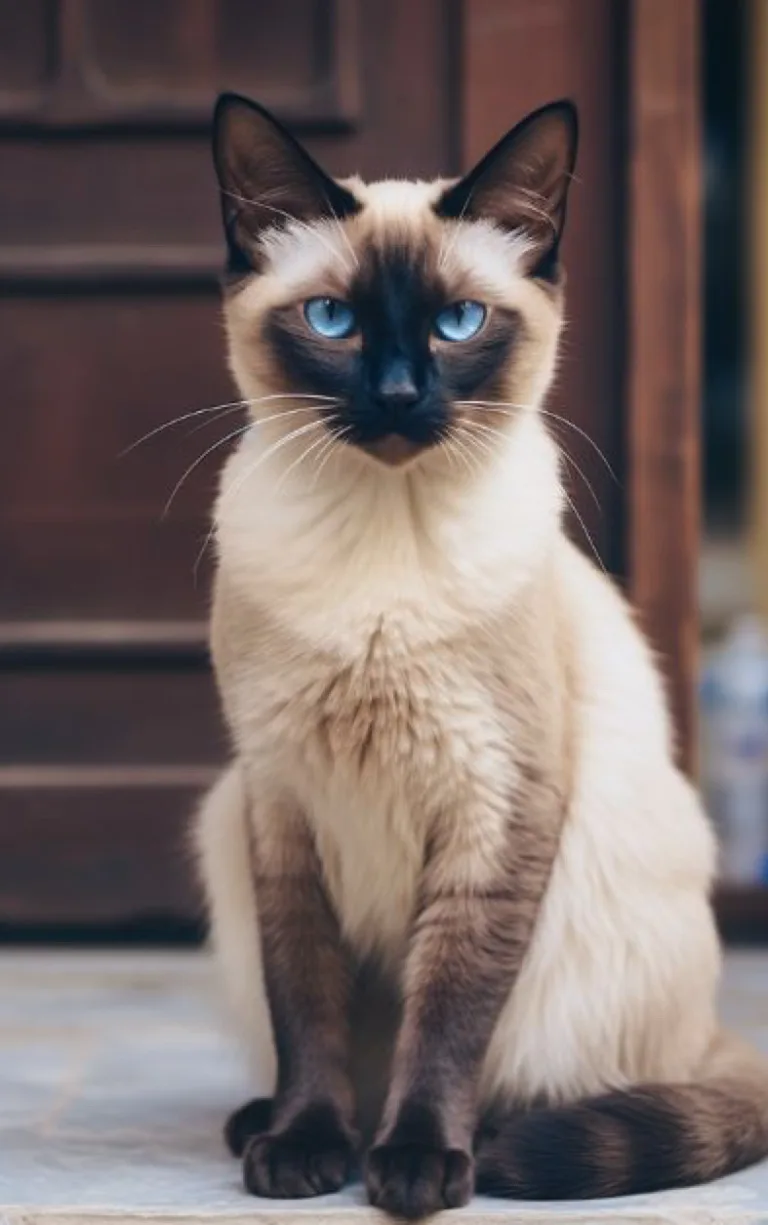
5.Siamese
The Siamese cat is one of the most popular and recognizable cat breeds globally, known for its striking appearance, vocal nature, and affectionate personality.
Appearance
- Sleek Body: Siamese cats have a slender and athletic build, with long legs and a lithe body. They are graceful and agile, often described as “oriental” in appearance.
- Color Points: One of their most distinctive features is their color-pointed coat, where the body is lighter in color compared to the darker points on the ears, face, paws, and tail. Common color points include seal, chocolate, blue, and lilac.
- Blue Almond-Shaped Eyes: Siamese cats have striking blue almond-shaped eyes that are expressive and intense, adding to their distinctive appearance.
Personality and Temperament
- Affectionate and Social: Siamese cats are known for their strong bond with their owners. They are affectionate, loving, and enjoy being in the company of people. They often form deep attachments to their human companions.
- Vocal: Siamese cats are highly vocal and known for their loud and distinctive meows, which they use to communicate with their owners. They are often described as “talkative” and enjoy interacting verbally.
- Intelligent and Curious: They are intelligent cats that enjoy mental stimulation and interactive play. Siamese cats are known to be curious and may explore their surroundings with enthusiasm.
Care and Maintenance
- Grooming: Siamese cats have a short, fine coat that requires minimal grooming. Weekly brushing helps to reduce shedding and keep their coat healthy.
- Health: Siamese cats are generally healthy, but like all breeds, they may be prone to certain health conditions, including dental issues and respiratory problems due to their facial structure. Regular veterinary check-ups are important for their well-being.
- Exercise: Siamese cats are active and playful cats that enjoy toys, climbing structures, and interactive games. Providing them with opportunities for exercise and mental stimulation helps to keep them happy and healthy.
History and Recognition
- Breed Origins: The exact origins of the Siamese breed are believed to be in Southeast Asia, possibly Thailand (formerly Siam), where they were revered as sacred cats. They were first introduced to the Western world in the 19th century.
- Popularity: Siamese cats quickly gained popularity in Europe and North America for their striking appearance and engaging personality. They are recognized by major cat associations worldwide, including The International Cat Association (TICA) and the Cat Fanciers’ Association (CFA).
- Varieties: Over time, different varieties of Siamese cats have been developed, including traditional (apple-headed) Siamese and modern (wedge-headed) Siamese, each with their own characteristics and preferences.
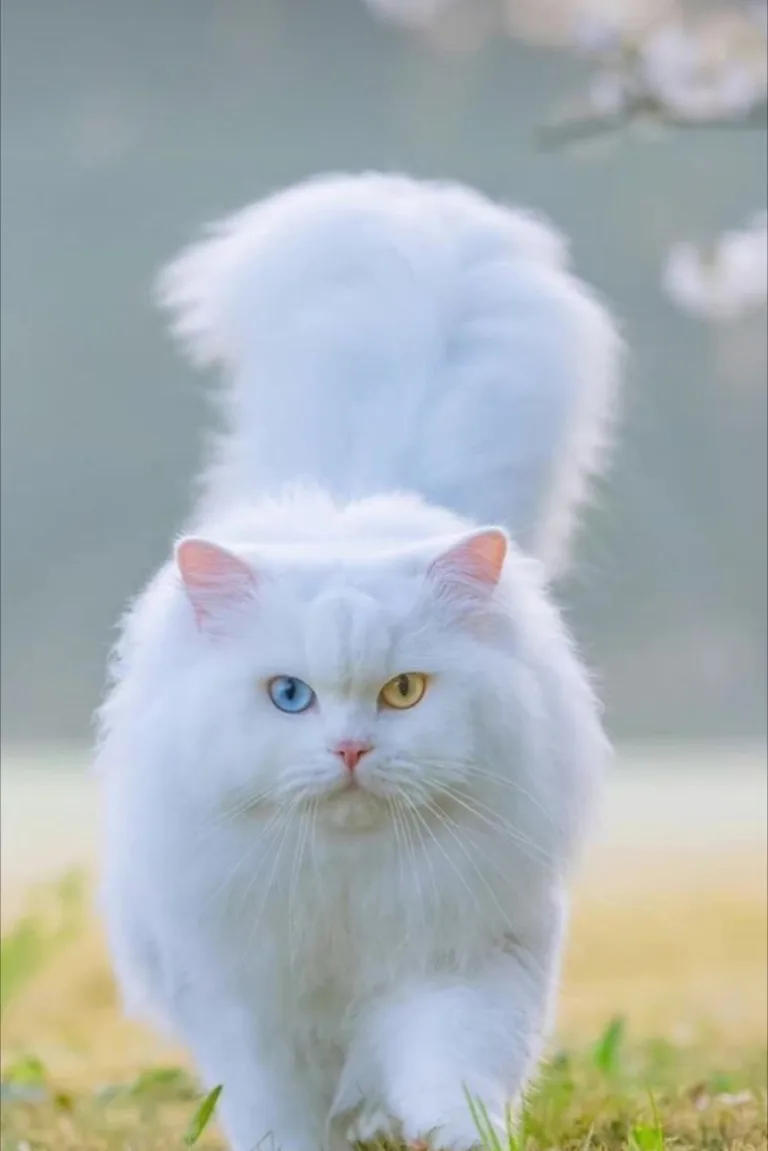
6.Persian
The Persian cat is one of the most popular and iconic cat breeds globally, known for its luxurious coat, distinctive appearance, and gentle temperament.
Appearance
- Long, Flowing Coat: Persians have a long, dense coat that is silky and luxurious. Their fur can come in a wide variety of colors and patterns, including solid, tabby, bi-color, and more.
- Flat Face: One of their most distinctive features is their flat face with a short nose and large, expressive eyes. This facial structure is known as brachycephalic and gives them a unique appearance.
- Stocky Build: Persians have a sturdy and muscular body with a short, cobby (compact) stature. They have a broad chest and short legs.
Personality and Temperament
- Calm and Gentle: Persians are known for their calm and laid-back temperament. They are affectionate and enjoy being in the company of their owners, often forming strong bonds.
- Quiet: Unlike some other breeds, Persians are generally quiet cats and not very vocal. They prefer to communicate through gentle meows or soft purring.
- Gentle Demeanor: They are typically tolerant and patient, making them suitable companions for families with children and other pets.
Care and Maintenance
- Grooming: Due to their long, dense coat, Persians require regular grooming to prevent matting and tangles. Daily brushing is recommended to keep their fur in good condition.
- Health: Persians are generally healthy cats but may be prone to certain health issues, including respiratory problems due to their flat faces (brachycephalic syndrome), dental issues, and eye conditions. Regular veterinary check-ups are important.
- Indoor Living: Persians are best kept indoors to protect their coat from dirt and matting. They thrive in a calm and predictable environment.
History and Recognition
- Breed Origins: The Persian cat breed has ancient roots, possibly dating back to ancient Persia (modern day Iran). They were introduced to Europe in the 1600s and gained popularity over time for their beauty and regal appearance.
- Popularity: Persians quickly became one of the most beloved and sought-after cat breeds worldwide. They are recognized by major cat associations, including The International Cat Association (TICA) and the Cat Fanciers’ Association (CFA).
- Varieties: Over time, different varieties of Persians have been developed, including traditional (doll-faced) Persians and modern (extreme-faced) Persians, each with their own characteristics and preferences.
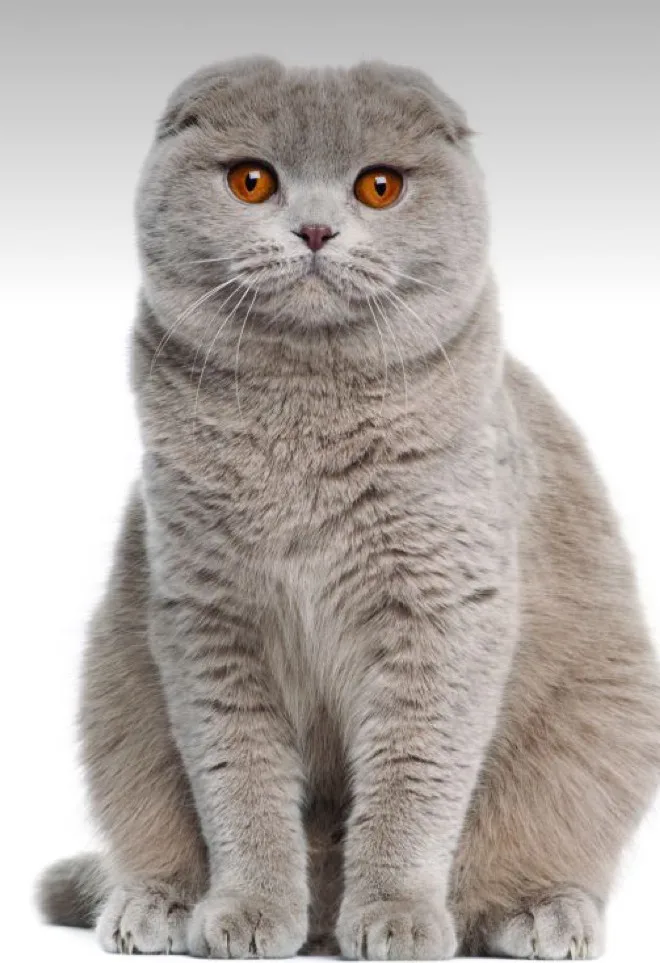
7.Scottish Fold
The Scottish Fold is a popular and distinctive cat breed known for its unique folded ears and sweet temperament.
Appearance
- Folded Ears: The most distinctive feature of the Scottish Fold is its folded ears, which fold forward and downward to give the cat a “owl-like” appearance. Not all Scottish Folds have folded ears; some may have straight ears due to their genetic makeup.
- Round Face: They have a round face with large, expressive eyes that give them a sweet and endearing look.
- Compact Build: Scottish Folds have a medium-sized, muscular body with a rounded appearance. They are well-proportioned and sturdy.
- Coat: They have a short to medium-length coat that is dense and plush. Scottish Folds come in various colors and patterns, including tabby, solid, bi-color, and more.
Personality and Temperament
- Sweet and Gentle: Scottish Folds are known for their gentle and affectionate nature. They are typically friendly and enjoy being around people, making them excellent companions.
- Playful: Despite their calm demeanor, Scottish Folds are playful cats that enjoy interactive toys and games. They are known to be curious and may explore their surroundings with interest.
- Adaptable: They adapt well to different living situations and get along well with children and other pets. Scottish Folds are usually tolerant and patient, making them suitable for families.
Care and Maintenance
- Grooming: Scottish Folds have a moderate grooming requirement. Regular brushing helps to keep their coat healthy and reduce shedding.
- Health: While Scottish Folds are generally healthy cats, they may be prone to certain health issues related to their ears, such as cartilage abnormalities and ear infections. Responsible breeding practices are important to minimize genetic health problems.
- Indoor Living: Due to their gentle nature and folded ears, Scottish Folds are best kept indoors to protect them from potential injuries and health issues. They thrive in a safe and stimulating indoor environment.
History and Recognition
- Breed Origins: The Scottish Fold breed originated in Scotland in the 1960s. The first Scottish Fold, Susie, had folded ears due to a genetic mutation. The breed quickly gained popularity for its unique appearance.
- Popularity: Scottish Folds are popular worldwide and recognized by major cat associations, including The International Cat Association (TICA) and the Cat Fanciers’ Association (CFA).
- Ethical Considerations: Due to their genetic mutation, responsible breeding practices are essential to ensure the health and well-being of Scottish Folds. It’s crucial to work with reputable breeders who prioritize the health and welfare of their cats.
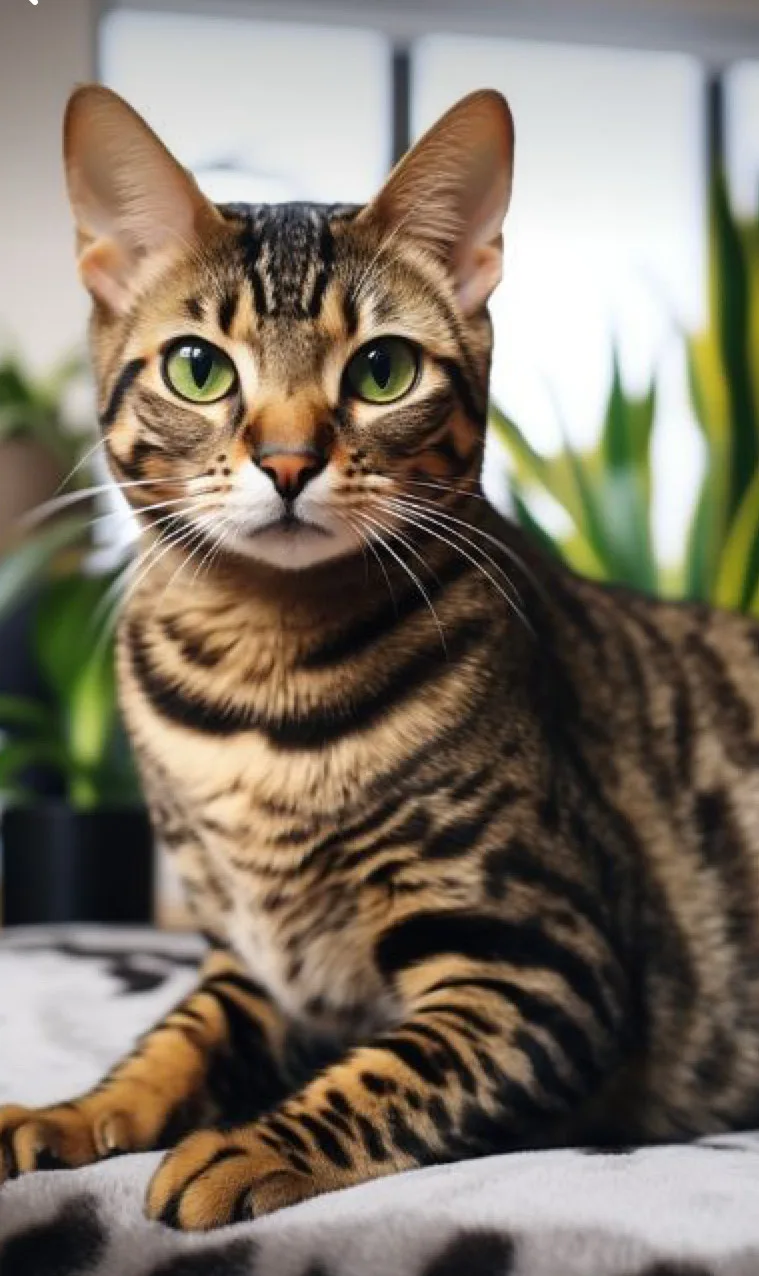
8.Bengal
Appearance
- Wild-Like Appearance: Bengals have a striking appearance reminiscent of their wild ancestors, the Asian Leopard Cat. They have a sleek and muscular body with a distinctive spotted or marbled coat pattern.
- Coat Patterns: Bengals come in various coat patterns, including spotted (rosetted or leopard-like spots) and marbled (swirled or marbled patterns). Their coat colors range from brown, silver, and snow (which includes colors like seal lynx point, seal mink, and seal sepia).
- Glitter: Many Bengals exhibit a “glitter” effect on their coat, which gives them a shimmering appearance in certain lights.
Personality and Temperament
- Energetic and Active: Bengals are known for their high energy levels and love for play. They are athletic cats that enjoy climbing, jumping, and interactive toys.
- Intelligent and Curious: Bengals are highly intelligent and curious cats. They thrive on mental stimulation and may enjoy puzzle toys or games that challenge their minds.
- Affectionate: Despite their wild appearance, Bengals are affectionate cats that form strong bonds with their owners. They often enjoy being involved in household activities and may follow their owners around.
Care and Maintenance
- Grooming: Bengals have a short to medium-length coat that is relatively easy to care for. Regular brushing helps to reduce shedding and keep their coat in good condition.
- Exercise: Due to their energetic nature, Bengals require ample opportunities for exercise and mental stimulation. Providing them with climbing structures, toys, and interactive play sessions is essential to their well-being.
- Health: Bengals are generally healthy cats, but like all breeds, they may be prone to certain health conditions such as hypertrophic cardiomyopathy (a heart condition). Regular veterinary check-ups are important for their overall health.
History and Recognition
- Breed Origins: The Bengal breed was developed in the 1960s by crossing domestic cats with the Asian Leopard Cat (ALC), a small wildcat species native to Asia. The goal was to create a domestic cat with the wild appearance of the ALC but with a friendly temperament.
- Popularity: Bengals have gained popularity worldwide for their exotic appearance and lively personality. They are recognized by major cat associations, including The International Cat Association (TICA) and the Cat Fanciers’ Association (CFA).
- Ethical Considerations: Bengals are active and social cats that thrive with human interaction. It’s important for prospective owners to provide them with appropriate environmental enrichment and care to ensure their well-being.
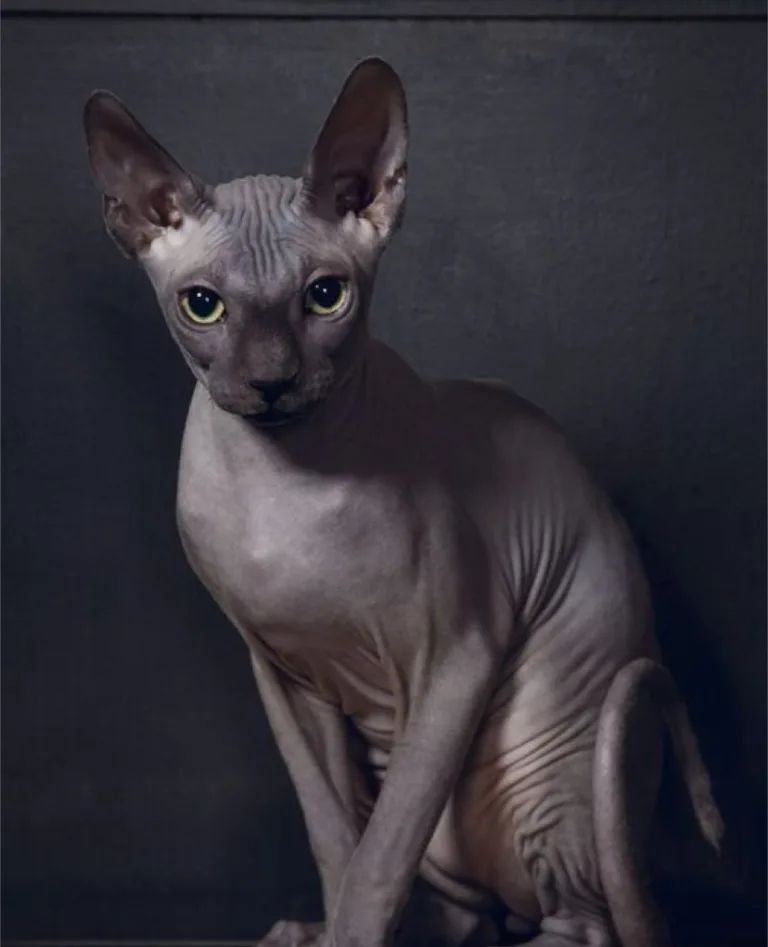
9.Sphynx
The Sphynx cat is a popular and distinctive breed known for its hairless appearance, wrinkled skin, and playful personality.
Appearance
- Hairlessness: Sphynx cats are known for their lack of a coat, although they are not completely hairless. They have a fine layer of downy fur that gives them a soft and warm texture.
- Wrinkled Skin: They have loose and wrinkled skin, particularly around their face, giving them a unique and expressive appearance.
- Muscular Build: Despite their hairless appearance, Sphynx cats have a sturdy and muscular body. They are medium to large-sized cats with a rounded abdomen and strong legs.
- Ears and Eyes: They have large ears that are set wide apart and large, lemon-shaped eyes that are expressive and alert.
Personality and Temperament
- Friendly and Affectionate: Sphynx cats are known for their friendly and affectionate nature. They enjoy human companionship and often seek out warmth and cuddles from their owners.
- Playful: They have a playful and energetic personality. Sphynx cats enjoy interactive toys, climbing structures, and games that stimulate their minds.
- Social: Sphynx cats are social cats that get along well with children, other pets, and visitors. They are curious and enjoy being involved in household activities.
Care and Maintenance
- Skin Care: Despite their lack of fur, Sphynx cats require regular skin care to maintain their health. They should be bathed periodically to remove excess oil and debris from their skin.
- Warmth: Due to their hairlessness, Sphynx cats are sensitive to temperature changes and should be kept in a warm environment, especially during cooler months.
- Health: Sphynx cats are generally healthy but may be prone to certain health issues such as skin conditions (like sunburn and acne), respiratory issues, and heart disease. Regular veterinary check-ups are important for their well-being.
History and Recognition
- Breed Origins: The Sphynx breed originated in the 1960s when a hairless kitten named Prune was born in Canada. Breeders selectively bred hairless cats with other breeds to develop the Sphynx cat we know today.
- Popularity: Sphynx cats quickly gained popularity for their unique appearance and affectionate personality. They are recognized by major cat associations, including The International Cat Association (TICA) and the Cat Fanciers’ Association (CFA).
- Ethical Considerations: Due to their unique care requirements, prospective owners should research and understand the needs of Sphynx cats before adopting one. Responsible breeding practices are essential to maintain their health and well-being.
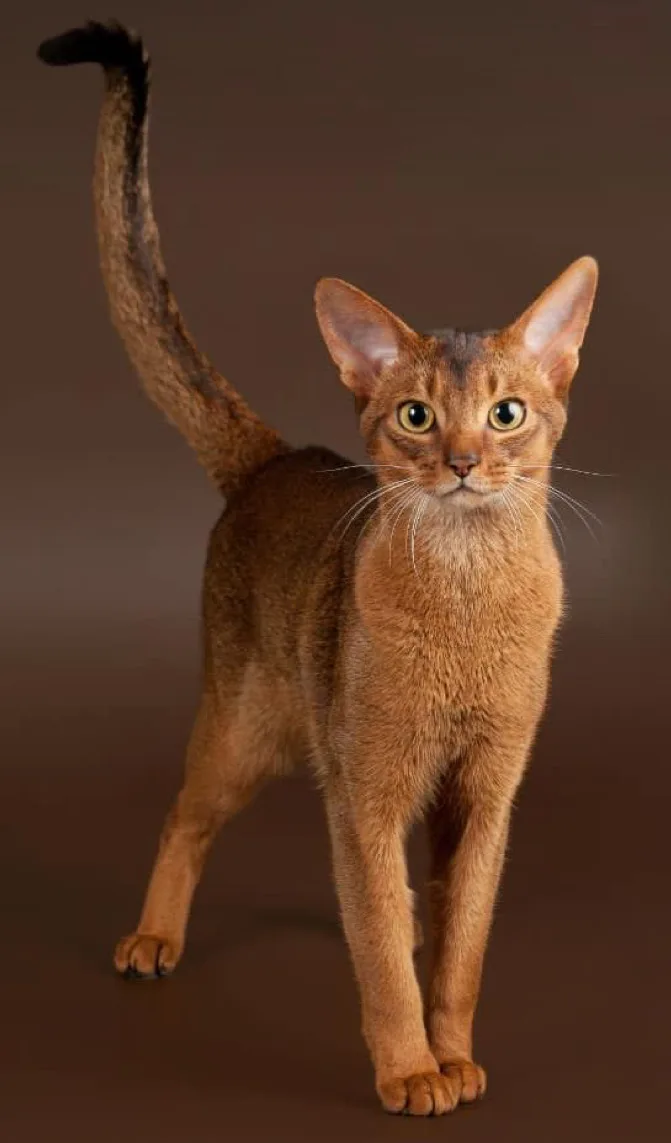
10.Abyssinian
The Abyssinian is a popular and beloved cat breed known for its sleek appearance, striking coat pattern, and active personality.
Appearance
- Sleek Body: Abyssinians have a slender and athletic body with a medium build. They are graceful and agile cats known for their muscular physique.
- Coat: They have a short and dense coat that lies close to their body. The coat is known for its “ticked” or agouti pattern, where each hair has alternating bands of color. This gives the coat a shimmering appearance in the light.
- Coloration: Abyssinians typically have a warm color palette, including ruddy (reddish-brown), sorrel (reddish-orange), blue (slate gray), and fawn (light beige). Their coat is accented with darker ticking and often has a lighter underbelly.
- Facial Features: Abyssinians have large, almond-shaped eyes that are usually green or gold, depending on coat color. They have a slightly wedge-shaped head with large ears that are alert and set well apart.
Personality and Temperament
- Active and Energetic: Abyssinians are known for their high energy levels and love for play. They are active cats that enjoy climbing, exploring, and engaging in interactive games.
- Curious and Intelligent: They are intelligent cats that enjoy mental stimulation. Abyssinians are curious by nature and may investigate their surroundings with enthusiasm.
- Affectionate: Abyssinians form strong bonds with their owners and enjoy being involved in household activities. They are affectionate cats that may follow their owners around the house.
Care and Maintenance
- Grooming: Abyssinians have a short coat that requires minimal grooming. Weekly brushing helps to remove loose hair and maintain coat health.
- Exercise: Due to their active nature, Abyssinians benefit from regular exercise and playtime. Providing them with toys, climbing structures, and interactive games helps to keep them physically and mentally stimulated.
- Health: Abyssinians are generally healthy cats, but like all breeds, they may be prone to certain health issues such as gingivitis (gum inflammation) and progressive retinal atrophy (eye condition). Regular veterinary check-ups are important for their overall health.
History and Recognition
- Breed Origins: The Abyssinian breed’s origins are believed to trace back to ancient Egypt, where cats with similar appearance and temperament were revered. The modern breed was developed in Europe in the late 19th century.
- Popularity: Abyssinians have gained popularity worldwide for their sleek appearance, active personality, and affectionate demeanor. They are recognized by major cat associations, including The International Cat Association (TICA) and the Cat Fanciers’ Association (CFA).
- Ethical Considerations: Responsible breeding practices are important to maintain the health and temperament of Abyssinians. Prospective owners should ensure they acquire Abyssinians from reputable breeders who prioritize the welfare of their cats.

